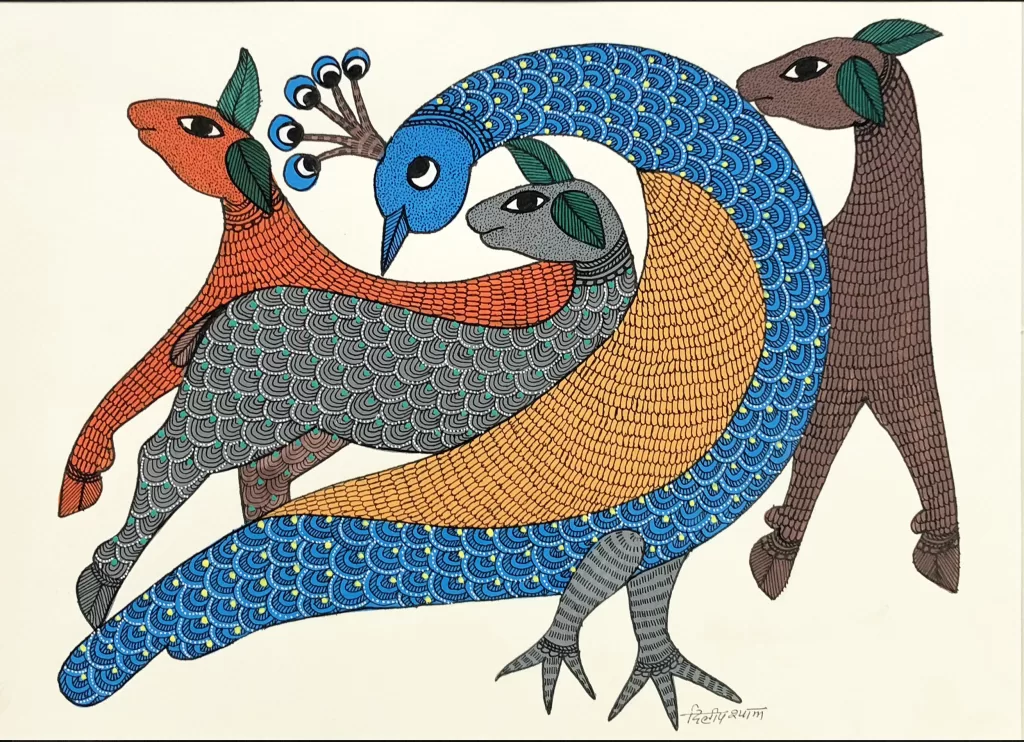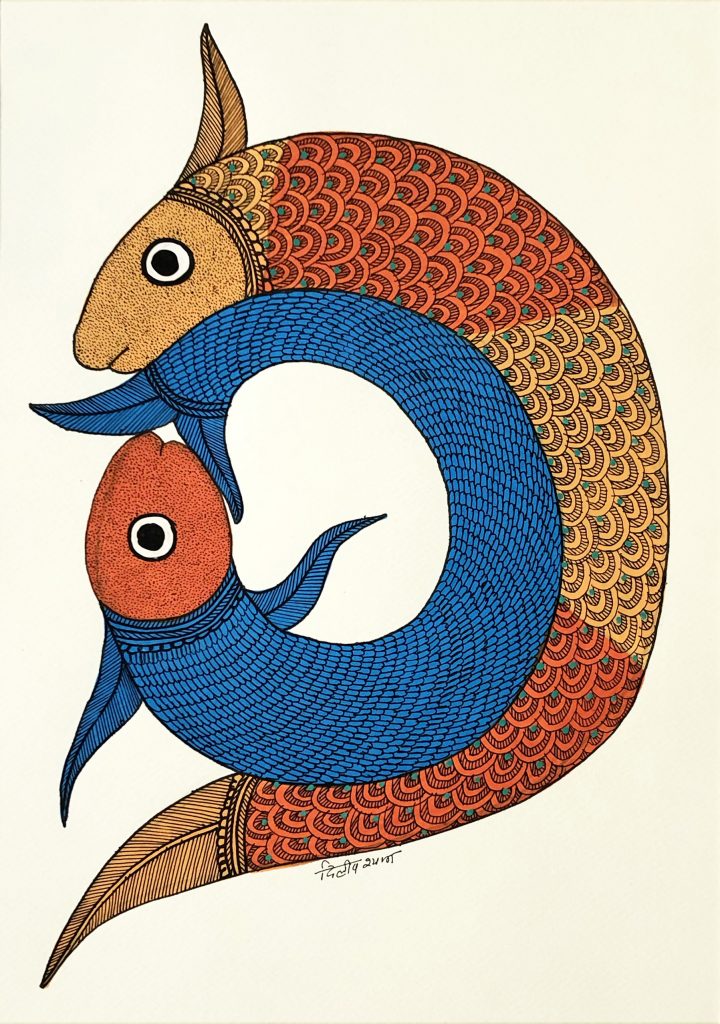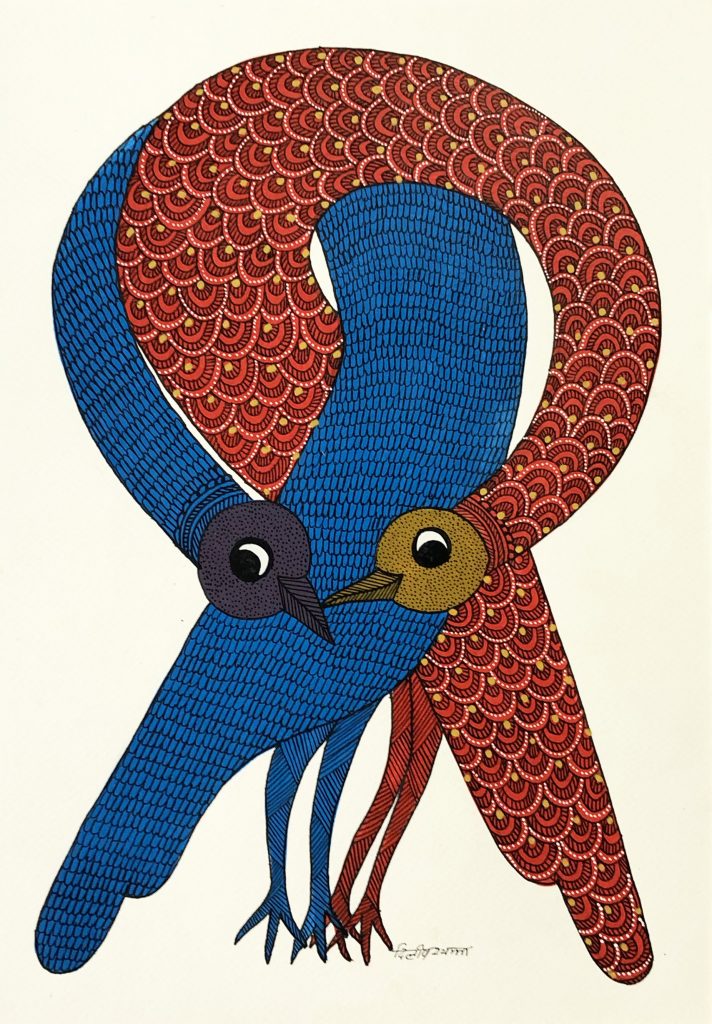Arising from death and tragedy is the story of rediscovering a form of art that was on the verge of disappearing, undocumented, into history.
STORY OF THE DISCOVERY OF GOND ART
Once a seat of power, colonialization
The documented history of the Gondis goes back for 14 centuries. It is believed that their actual history goes even further back, all the way to the Mesolithic era over 140 centuries ago. This was based on the cave paintings found in that area as well as the customs that the Gondis follow.
Before the 1980’s, Gond Art was a closely held art form which was almost never committed to paper. For the Gondis, this was an offering to nature, a way to ward off evil and bring in good luck. They believed everything around them rock, river, mountain were all imbued with a life force and were sacred. This is what they depicted in their paintings as well. They used natural pigments to create the paintings on the mud walls and floors of the houses that the Gondis resided in.
In 1980, Jangarh Singh Shyam, a 17-year-old boy, found himself living a movie. His talent with Gond art was discovered and for the next ten years he travelled the world with his art and paintings, showcasing them in exhibitions and galleries. He made a name for himself, his tribe and his country. Jangarh Singh Shyam was a window for the world into the lives of the tribe living in the heart of India.
While his story has a magnificent beginning the end was rather tragic. He committed suicide in Japan when he was there for an art fellowship. We can all speculate but we will never know why. He started the movement and brought life to the Gond Art.
Today the Gondis are the largest tribe in India with a population of over 11 million but the art form is still restricted to a few. Mostly because the Gondis cannot afford to abandon their daily wage jobs because of the uncertainty and the subjectivity of the profession that is being an artist.
ABOUT GOND ART
The paintings were originally made of natural pigments such as charcoal, leaf sap, different coloured mud and such. In todays day and age, with dwindling natural resources, they have now started using poster colours on canvas.
Gond art is a dance of dots and dashes that add movement and fluidity to the flat canvas. Gond art is made of thin carefully drawn lines that impart a sense of movement to the images. The dots and dashes add to that sense of movement and create incredible detail. The paintings take inspiration from nature and from their history, myths, and legends. These representations can be found across the paintings. They tend to often be animistic or represent scenes from the stories told in their religion and faith. But they ever-so-often cover abstract concepts like dreams, imagination, and emotion.
Each artist has now developed their taste and preferences, some use lines, some use dashes; some paintings are monochromatic while the others are bright, vivid and colourful.
This is the legacy of Jangarh Singh Shyam and the future of Gondis in the world.
Go ahead and check the Shop for a piece of gond art that touches your heart!
Miloni Mehta
CUBS Editorial Team









